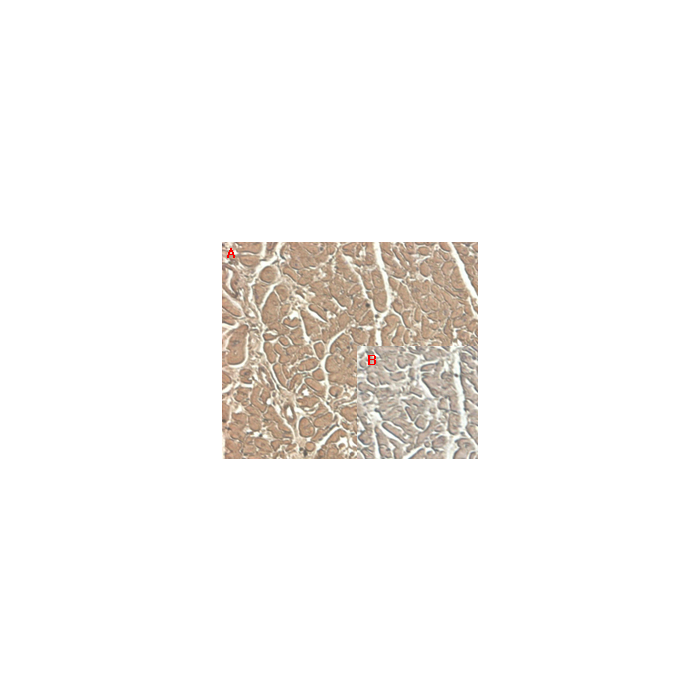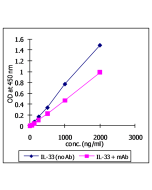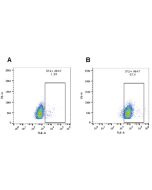Cookie Policy: This site uses cookies to improve your experience. You can find out more about our use of cookies in our Privacy Policy. By continuing to browse this site you agree to our use of cookies.
AdipoGen Life Sciences
anti-ST2 (human), mAb (ST33868)

A. Immunoperoxidase staining (cytoplasmic) of formalin-fixed, paraffin-embedded human heart (100x, brown colour).
B. Isotype control with IgG1 (negative control).
1. Recombinant human soluble ST2-Fc protein.
2. Recombinant human soluble ST2-FLAG protein.
3. Recombinant mouse Resistin-Fc protein (Negative control).
| Product Details | |
|---|---|
| Synonyms | Interleukin-1 Receptor-like 1; IL-1 Receptor-like 1; IL1RL1; IL-33 Receptor; Interleukin-33 Receptor |
| Product Type | Monoclonal Antibody |
| Properties | |
| Clone | ST33868 |
| Isotype | Mouse IgG1κ |
| Immunogen/Antigen | Recombinant human soluble ST2. |
| Application |
ELISA: (direct or indirect: 1:2'000-1:5'000) |
| Crossreactivity | Human |
| Specificity |
Recognizes human ST2. |
| Purity Detail | Protein G-affinity purified. |
| Concentration | 1mg/ml |
| Formulation | Liquid. 0.2μm-filtered solution in PBS, pH 7.4. Contains no preservatives. |
| Isotype Negative Control | |
| Shipping and Handling | |
| Shipping | BLUE ICE |
| Short Term Storage | +4°C |
| Long Term Storage | -20°C |
| Handling Advice |
After opening, prepare aliquots and store at -20°C. Avoid freeze/thaw cycles. |
| Use/Stability | Stable for at least 1 year after receipt when stored at -20°C. |
| Documents | |
| MSDS |
 Download PDF Download PDF |
| Product Specification Sheet | |
| Datasheet |
 Download PDF Download PDF |
The ST2 gene was originally identified as a gene induced by serum or oncogene expression in fibroblasts. The gene produces a shorter soluble secreted form (ST2) and a longer, transmembrane form (ST2L) by alternative splicing. Soluble ST2 has been shown to downregulate the expression of TLR1 and TLR4. ST2L negatively regulates TLR4 signaling and induces endotoxin tolerance, and enhances Th2 responses. IL-33 is the specific ligand for ST2L.
- Experimentally induced psoriatic lesions associate with rapid but transient decrease in interleukin-33 immunostaining in epidermis: M.M. Suttle, et al.; Acta Derm. Venereol. 95, 536 (2015)







